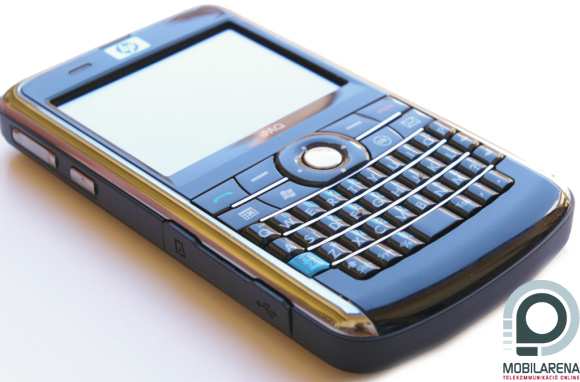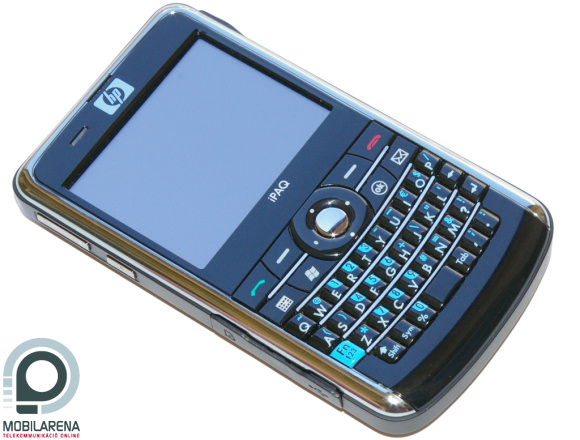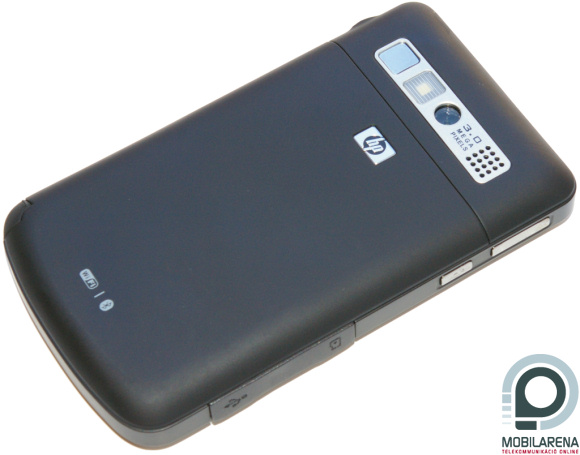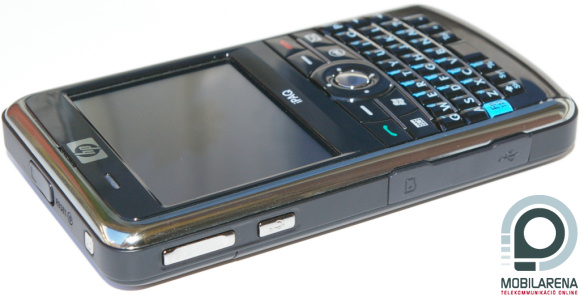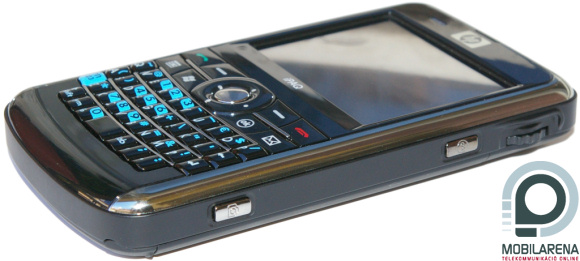Introduction, exterior
We’ve been waiting a lot for it. HP announced their new 900 series Pocket PC last September, but it only started shipping at the end of last month. There is not much known about the background to this, but the point is that the device is available and we had one for tasting, yet again from SpeedShop. It came in a white box and it shipped with a charger, a data cable and a stereo headset.
The manufacturer built up it’s product portfolio very well. There is a cheap WM-based smartphone (514 Voice Messenger), two PDAs without telephony features (from the 100 and the 200 series), a fine high-end combo device (614c) and the subject of our current review, 914c, that is based on the BlackBerry series. It is a real business model with an advanced display, a QWERTY keyboard and a demanding design. The front is black, it’s made of shiny, hard plastic, even looking at it makes me feel good. On the side there is a silvery band running along and the back is made of silky, rubber-like material, which provides a good grip. It’s a bit heavy (146 grams), it’s a bit large (113 x 64 x 16 mm), but many business handsets are like this.
The designers didn’t pay attention to a single thing. A small thing, that might sound insignificant, but it isn’t. There is a rubber cover on the left side of the handset, which protects the microSD slot and the miniUSB port from all external perils. Oh, I mean it would protect it if the designers would have been thinking about how such a thing works. The part covering the data connector stays at its place only until we take it out, for example in order to charge the phone. That’s it, after this no matter what we do the small piece of rubber will be hanging around there. This is a shame, a real, epic fail at such a high-class business device, not mentioning that it’s a great example for foolish design. Probably there won’t be many who will agree with me but I think that this is such a flaw that can destroy the overall image, even though the handset would be really fine. It’s a great luck that I took the pictures in the review before the first charge, after this I had to get used to the situation pictured below (pay attention to the lower part, as the memory card slot’s cover can be plugged back).
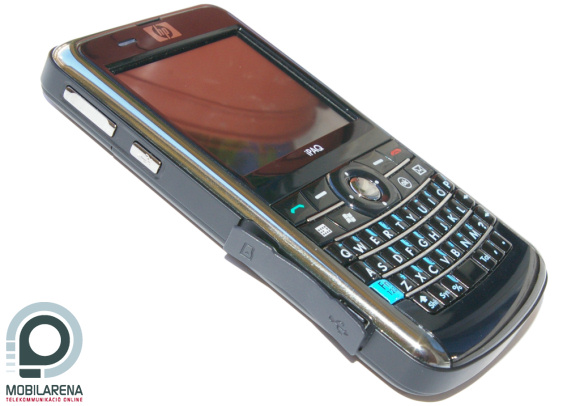
[+]
After the first charge. The rubber cover was somewhat still at its place here...
It’s probably not very good to start describing a product this way, but I just couldn’t accept such a design flaw, moreover at such a handset, which would practically be fine from every other point of view. On top, besides the status LEDs we can see the phone speaker, disguised as an HP logo, while under this we can see the landscape QVGA display below it, with a diagonal of 2.46”. Yeah, it’s quite small; this is the downside of this design. At about the center we find the main controls, which include eight keys and the five-way d-pad, which are really easy to use. The QWERTY keyboard with 37 keys is on the bottom, which basically provides a comfortable typing method, the only problem with it that the blue Fn key hardly reacted to presses, I can say that I had to press it really hard in order to make it function. Entering special characters is done rather easily, after pressing the desired key we just have to press the Sym button.
The back is not spectacular, I think that it perfectly matches the phone’s overall external design. On the top we can see the 3 megapixel autofocus camera and its accessories (flash and mirror), along with the handsfree speaker. The not too large HP logo is below this, while on the bottom we can see two other logos, which attract attention to the handset’s data communication features. The stylus is in the lower left corner, it’s telescopic, but even in a closed state it’s larger than at most other handsets when opened – so it’s really large which makes it very easy to use.
The power button is on the top, along with the reset gap and the external antenna’s connector, which is also protected by a cover – interestingly this is much, much better then the previously mentioned one on the side. On the left we can observe the volume control keys, the sound recorder’s hotkey and the already mentioned rubber cover.
There is nothing on the bottom, while on the right there is the camera’s exposure key, the OK button and the jog-dial, which is a bit hard to press, but it’s good that we have one.
A cikk még nem ért véget, kérlek, lapozz!


